Starting in the 1980s of the XNUMXth century, a new way of doing tourism began with the purpose of observing and enjoying activities in contact with nature, called Ecological Tourism, Ecotourism or Nature Tourism. This way of doing tourism seeks to promote a tourism where the main thing is the sustainability and conservation of the environment and the cultural traditions of the places visited. I invite you to know what Ecological Tourism consists of, here in this article.

Ecological Tourism or Ecotourism
This type of tourism is a modality of the proposals to encourage tourism whose main attraction is to show the different landscapes that nature offers, due to this objective it receives the names of Ecological Tourism, ecotourism or nature tourism. Ecological Tourism is an ethical way of doing tourism for some people who like activities in nature and have contact with local populations and their cultures. Due to this, the programmed activities are elaborated with principles of environmental sustainability.
This way of doing tourism began in the 80s, and quickly became a very attractive tourism segment, becoming the most dynamic and growing tourism sector worldwide. In view of the interest aroused among the population that likes this type of tourism, the United Nations Organization (UN) chose the year 2002 to promote the different activities carried out in Ecological Tourism.
In 1990, the International Ecotourism Society (TIES) was founded with the aim of promoting this type of Ecological Tourism, and fulfilling its mission or reason for being... a trip made with the responsibility of conserving the environment and contributing to the improvement of the good condition of local populations. TIES is committed to achieving this mission by promoting biocultural conservation and guiding actions towards sustainable tourism worldwide. In order to achieve its mission and vision, Ecological Tourism has to comply with the following principles:
- To reduce the negative environmental and cultural impacts produced by this activity.
- Implement respect and knowledge for the environment and cultural traditions
- Provide positive moments for hosts and tourists
- Provide economic benefits for environmental and cultural conservation
- Provide monetary benefits and enhance participation in local community decision-making
- Establish understanding towards the political, environmental and social aspects of the host countries
- Support global human rights and labor laws
Ecological Tourism, although it is a relatively recent tourist and travel activity, is considered by several environmental groups, governmental and non-governmental organizations in the international arena as a feasible activity for sustainable development. The activity of Ecological Tourism for countries such as: Costa Rica, Puerto Rico, Kenya, Madagascar, Nepal and Ecuador (Galapagos Islands) generates significant income for the tourism sector of those countries and also in some countries for their economy.
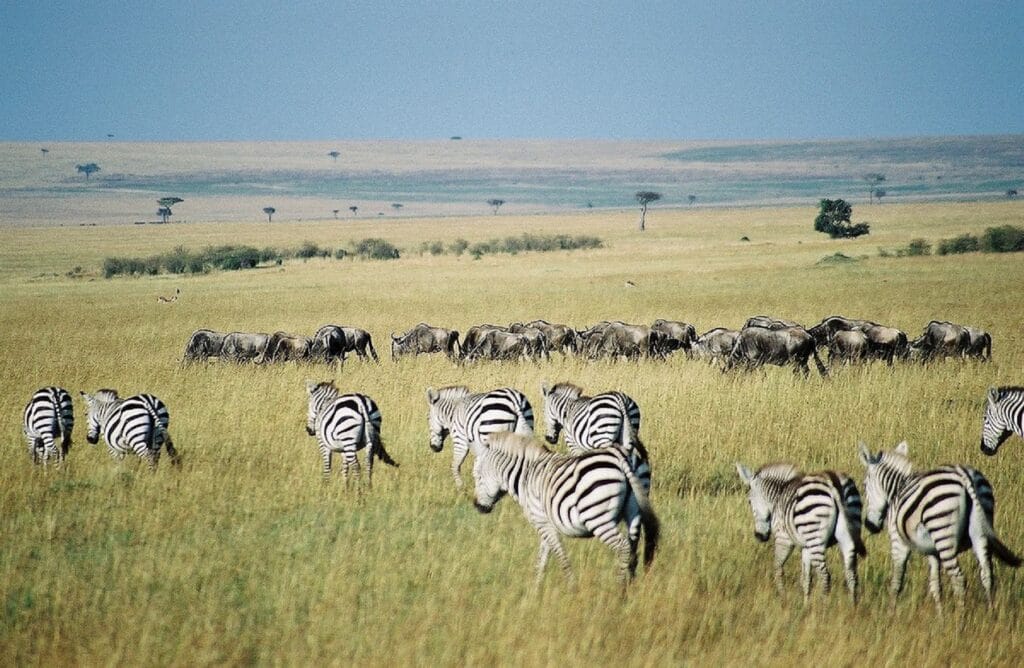
Our Common Future
In 1987, the UN World Commission on Environment and Development wrote the book Our Common Future, also known as the "Brundtland Report", for having been chaired by the Norwegian doctor Gro Harlem Brundtland. This document was prepared with the objective of presenting a series of proposals that could be carried out, to avoid the advance of environmental problems caused by development in the world.
Scientists and politicians from 21 countries participated in the preparation of the book Our Common Future or Brundtland Report, who analyzed the written reports obtained during three years of public hearings and more than 500 written surveys. One of the most significant contributions of this report was to clarify that environmental conservation had transcended from being a local, regional and national problem to become a global problem, therefore all countries and human beings have to work to achieve a solution, given that development and the environment are closely related.
A significant result of this report, achieved after three years of analysis of comments from experts from more than 21 countries, was the contribution made to environmental policy in the international arena in which the concept of sustainable development was defined "that which satisfies the requirements of the present without affecting the requirements of future generations”… from which the Earth Summit held in Rio de Janeiro, Brazil in 1992 was organized.
World Ecotourism Summit 2002
In view of the importance that Ecological Tourism quickly took on to promote environmental conservation on the planet, with the aim of unifying criteria and commemorating the Year 2002 as the International Year of Ecological Tourism, established by the UN, it was celebrated in Quebec, Canada. the World Ecotourism Summit from May 19 to 22, 2002. The following topics were discussed at the summit:
- Ecotourism Policy and Planning. This theme addressed the different policies, programs and plans at different local, regional and international scales. Proposals for sustainable development plans; use of ecotourism in national parks and protected areas of special administration. Territorial planning and ordering. Analyze the harmony between development and conservation. Programs and financing for Ecological Tourism and development of human resources.
- Discuss the Ecological Tourism Regulation
- Proposal and development of products, marketing and proposals with the development of sustainable products, contribution of various agents, environmental education, strategic alliances between the public and private sectors.
- Review of the Costs and Benefits for their contribution to environmental conservation, potential impacts, acceptance of preventive measures, unification in supervision and evaluation, specifying research and management systems.
In the debates of the Summit, they focused on supporting Ecological Tourism in different areas such as environmental, socio-cultural and economic, and also on collaboration and participation in local communities, management, management and supervision of activities and the objective distribution of recorded profits.
Ecological Tourism and Green Tourism
There are several definitions of Ecological Tourism, which affects how it is carried out, this is due to the fact that it is still not clear what Ecological Tourism is and it is not, together with this there is no international body that specifies and certifies this activity. Consequently, tourist agencies offer tourist proposals with activities combined with activities in nature with other urban fun. Carrying out activities in nature, such as a day at the beach, camping, fishing, adventure tourism and other activities in contact with nature, is not Ecological Tourism. It could be said that it is a green tourism or simply natural tourism.
In view of these situations, institutions such as the World Tourism Organization (UNWTO) and the United Nations Environment Program (UNEP), published in various magazines and virtual pages the definition of Ecological Tourism or ecotourism and suggestions for environmental policies and good deeds to make it sustainable. In these definitions it is clear that the word ecotourism has a double meaning, given that on the one hand it is addressed to a segment of the market and on the other hand, it is managed under a series of principles.
What is Ecological Tourism or Ecotourism?
The term ecological tourism is defined by the World Tourism Organization, as an activity that takes place in a natural environment and the main objective of the tourist is to know, observe, learn, experience and value biodiversity and cultural traditions with a responsible attitude. and respectful towards the visited site, with the aim of preserving the natural ecosystem and achieving the well-being of the local community. The ecotourism activity has to be managed following specific characteristics to reduce the negative impact on the ecosystem and former inhabitants.
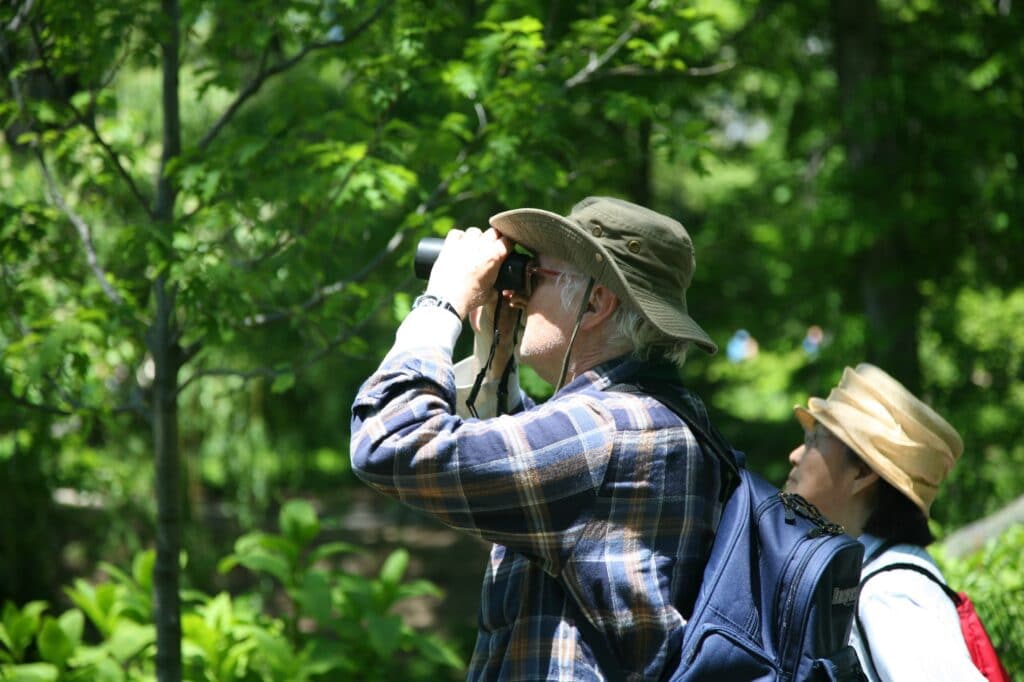
According to the Tourism and Competitiveness Committee (CTC), it considers Ecological Tourism as an intrinsic activity of the objective of sustainable development, it is a type of tourism focused on nature that has the characteristics of being closely related to sustainable development and therefore It is based on the guidelines of sustainable development and, for this, it is supported by the fulfillment of the following components.
- It favors the conservation of biological diversity
- Contributes to the well-being and sustainability of the local population
- This type of tourism contains experiences of environmental interpretation and learning
- It implies responsible management by visitors and the tourism industry.
- The activities are carried out primarily with small groups by small companies.
- During this type of activity, a very low amount of non-renewable resources is used and its activities are supported by renewable resource sources such as: solar, wind, biomass energy, among others.
- It highlights the appropriate contact with local activities, properties and negotiation opportunities for the inhabitants of the locality.
The definition of Ecological Tourism according to the Secretary of Tourism of Mexico (SECTUR) are "those trips that have the objective of incorporating recreational activities in natural areas and enjoying the cultural traditions of the environment with an attitude on the part of the visitors and the tourism companies to know, respect, enjoy and participate in the preservation of natural and cultural resources”. The Secretariat of Tourism of Mexico (SECTUR), differentiates Ecological Tourism from Nature Tourism and divides the latter into three main lines: Ecological Tourism, adventure tourism and rural tourism.
Therefore, the concept of Ecotourism is defined as “Organized trips with the fundamental objective of interacting, knowing and observing nature and collaborating in its conservation. This tourism is usually carried out in areas little altered by human activities and includes activities to raise awareness of the environment and cultural traditions”. Ecological Tourism is also defined as "trips to natural places with an attitude of knowing, learning and conserving the environment and contributing to the improvement of the communities visited".
Types of Ecological Tourism
Depending on the restrictiveness of the Ecological Tourism or ecotourism activity, three categories can be differentiated, identified with a number. It would be a Type 1 ecotourism. When ecotourism is oriented towards nature conservation; Type 2 ecotourism. It is when it is oriented towards the conservation of nature and also promotes the conservation of the culture of the visited site and its historical heritage. Type 3 ecotourism will be when a socially sustainable ecotourism activity is added to natural and cultural conservation, with the aim of benefiting the local population.
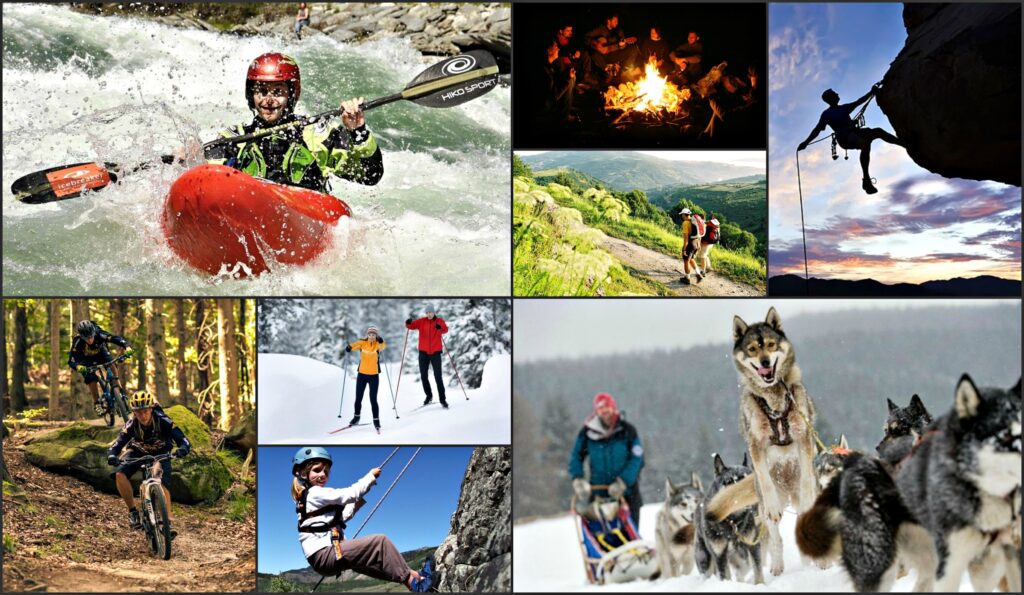
This last type of ecotourism, by integrating conservation into a broader framework and its adequate management to incorporate a service activity, leads to a better quality of life for the receiving population and a better distribution of the wealth generated by the tourist activity, affecting minimally to the inhabitants and their natural environment.
Culture and traditions
In 2003, the World Wildlife Fund (WWF), categorized ecotourism as "those Ecological Tourism ventures that are managed in favor of a society" specifying that this ecotourism is carried out by a team of people who are part of that community and who lives in the place. In this category of Ecological Tourism, the local population is not only involved in the tourist activity, but also the same people from the locality are responsible for the Ecological Tourism project, which favors all the members, some directly and others indirectly.
Following this line of action, the ILO (International Labor Organization) in 2003, pointed out that the Ecological Tourism proposal with indigenous and rural communities is oriented towards a specific mission, such as improving the quality of life of the communities in those localities; in order to conserve cultural identity and ecosystems. Through contributing to the improvement of the capacities of the municipality to promote sustainable and competitive tourism.
In the ILO Convention 169 that promotes the rights of indigenous peoples, in its article 7, it states: "The peoples must have the right to decide what their priorities are with respect to their progress and development, depending on the impact of the same in their lives, dogmas, organisms and spiritual well-being, and on the territories they occupy or only use and to carry out, as far as possible, their own economic, social and cultural development.
Likewise, the aforementioned indigenous peoples will have to take part in the formulation, elaboration, execution and evaluation of the national and regional development plans that may have a direct impact on them. Taking into account the above, the organizations have raised a series of very clear demands in order to know and be clear about the impacts of the number of tourism projects, which are increasing every day, that are carried out with the communities or that are executed at their expense.
The concern of the ILO lies in two points of interest, the first is the one referred to the impact of Ecological Tourism on the resources of nature, its culture, and living conditions. Based on these well-argued demands, the ILO has designed a program of Business Development Services for community tourism, which is better known as the Network to work with communities that have expressed their interest in tourism, the claims are clear : The support tactics do not have to alter the resources and territorial surface, nor stimulate individualism, with the aim of not contradicting the bases of the indigenous traditions on life, their environment and in general their worldview.
In order to counteract the threats to indigenous lands, due to potential oil and mining projects and uncontrolled tourism, he led the indigenous organizations called the Confederation of Nationalities of the Ecuadorian Amazon (CONFENAIE) and, through the Coordination of the organizations Indigenous Peoples of the Amazon Basin (COICA) to develop in the 1990s the foundations for Community-Based Ecological Tourism (EBC) in the eastern Amazon, which made it possible to achieve other more rational or sustainable economic alternatives.
Public policies
In recent times the tourism industry has been located in the largest service industry. Within this sector, Ecological Tourism has been climbing steps and positioned itself for rapid growth, since in the 1990s there was an interest in promoting green tourism in different varieties of goods and services. According to experts in the world, ecotourism has grown by 10% to 15% throughout the planet.
These percentages of growth of Ecological Tourism allow the development of tourist proposals as a response to improve the quality of life of communities and localities, by autonomous peoples, NGOs, international organizations, government institutions, and provide a response that faces the threatened with forestry projects, mining, logging and oil exploitation, which negatively impact the environment and society.

In addition to this, the Ecological Tourism sector has the power to promote jobs, foreign exchange and facilities that improve local development. However, with respect to the potential of ecotourism, there is little convergence in the definition of what ecotourism is and this dilemma has led to the emergence of proposals with the "green" and "ecotourism" labels, without complying with the principles of ecotourism. . According to Azevedo Luíndia (2005) due to this inaccuracy in the definition of it... "Ecological Tourism can be anything and everything at the same time can be nothing"...
Economic and Social Impact
Unfortunately, the local communities or those close to the natural ecosystems do not receive sufficient economic contributions. Feeling used by ecotourism companies and especially by the increase in tourists, observing how the money reaches external groups and few are the positive impacts that reach the local groups. As well as this negative impact, other impacts on the communities can be described.
- A negative social impact of Ecological Tourism is the changes of ownership of the land in localities and also when offering for sale speculations occur regarding its sale value and this primarily affects the locals who feel uncomfortable due to the presence of foreigners who they use spaces along protected areas and other ecotourism areas, sometimes unscrupulously.
- In natural areas that are very fragile because they are spaces where human beings had not penetrated, they can be negatively impacted by tourists who, due to ignorance, directly or indirectly affect their flora and fauna. For example, when they feed animals such as monkeys, birds or crocodiles so that visitors can take pictures. Altering the dynamics of feeding animals.
- Conflicts of interest are intensified by the use of traditional practices by the locals, in places where they traditionally carried it out, such as cutting firewood, hunting, extracting medicinal plants and in some cases using palm leaves. to build the roof of their homes. This is because by activating visits for ecotourism, prohibitions are established for the surrounding populations of natural ecosystems, as they are decreed as protected areas.
- New constructions for Ecological Tourism, such as hotel buildings, various stores, restaurants, are built very close to natural spaces, negatively impacting the landscape because some have architectural designs that do not harmonize with the natural landscape. The dynamics of their uses can cause environmental pollution, due to the accumulation of solid waste, noise pollution, contamination of its waters, night lighting very close to places where the local fauna lives.
- The design of the interpretation trails to be used by visitors is usually limitedly designed and it also happens that the route becomes inappropriate because it is the same path there and back, instead of a place that allows a circle circuit. . Due to this, erosion problems can be caused by trampling and sometimes tourists are guided by people with little knowledge of the place and of guidance, making bad tours with poor information.
- Lack of load capacity studies in the areas visited, especially in the most fragile places to any type of negative environmental impact. It happens that there is little planning to limit or space the entrance to places or paths when their carrying capacity is exceeded.
- It usually happens that many of the Ecological Tourism proposals are only interested in attracting tourists from abroad, due to the high income in foreign currency that this type of tourism provides. Consequently, little attention is paid to the native tourist as well as the local school group, who have few resources to travel.
Regardless of the definition and principles of Ecological Tourism, as well as its opportune use by the tourism industry, there are economic groups that consider a great growth potential for the ecotourism segment. Seen from this point of view, Ecological Tourism can play a good role in the development of several Third World countries for different reasons: income income and increased employment, infrastructure development and increased informal economy.
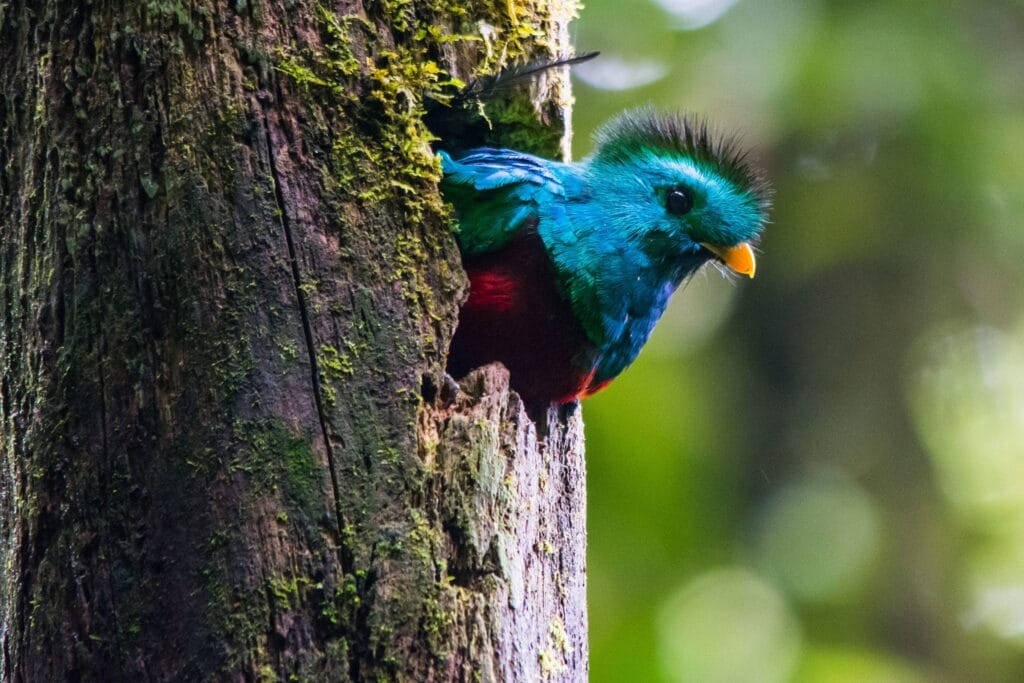
Countries with little economic growth due to other sectors of the economy and with several very attractive natural ecosystems and interesting cultural traditions, such as Brazil, Peru, Bolivia and Ecuador. In general, the Ecological Tourism sector requires little investment by the public sector in infrastructure, compared to conventional tourism; although, Ecological Tourism or ecotourism can bring better benefits to local communities than traditional tourism.
In this regard, ecological tourism in its economic dimension is mixed with the main currents of anthropocentric and egocentric social philosophies. When it comes to the topic of ecotourism, one of the critical points to discuss is to what extent it can be a competitive advantage from an economic point of view for its local communities and for the receiving country. As it is also a good source of income for foreign operators, especially as this segment of the market continues to grow.
Resulting in a controversy, given that this good economic fortune does not usually reach the destination countries and less to the economy of the local communities where the natural spaces of extraordinary beauty and the tradition of their ancestors are located. According to studies on the economic impacts of the Ecological Tourism activity, there is a predominant theory that indicates that Ecological Tourism increases income in three areas:
- In the country where the environmental and/or cultural resources are located, due to the foreign exchange earned by ecological tourists.
- To the local population in view of their participation in activities in the tourism sector, and also through other complementary sectors.
- To the administrator of the natural space or cultural activities for the contribution they receive directly from tourists when they pay for access.

Obstacles in the development of Ecotourism
There are few studies that guarantee how ecotourism can provide a complete answer on how to satisfy the progressive increase in demand by ecological tourists. In view of the lack of planning in the short and medium term, it works by solving emergencies (even improvising) when a crisis or catastrophe occurs. Without evaluating why it happened in order to take foresight in a future opportunity.
Although there is an extensive literature produced by the World Ecotourism Society, and yet little is consulted or studied the experience in other countries. There is information in different languages, such as Spanish. On the other hand, budgetary contributions are low to carry out the planning, execution and monitoring of ecotourism, especially in hotel facilities. At present, there is knowledge of an organized movement to qualify and certify hotels, according to their demonstrated sensitivity towards the environment, however, the results and their impact on the reality of tourist activity have yet to be evaluated.
There are few educational institutions and with a high quality in education on ecotourism. An educational center that is recognized and has the documentation that certifies it, so that it is a guarantor in the training of professionals and researchers in Ecological Tourism in different areas and levels of training and specializations. Also, have a good relationship with the residents of these institutions in order to take advantage of their biological, culinary, traditional, artistic knowledge that could be used.
Few objective statistical evaluations and monitoring have been carried out that report in detail the impact of Ecological Tourism, in order to take it into account and, based on this information, make improvements or change the course of being essential and promote new ways of approaching ecotourism. in a more responsible and sustainable way over time.
Perspectives of Ecological Tourism
The perspectives of a well-practiced Ecological Tourism activity can become a great instrument to promote the conservation and protection of natural environments and the cultural traditions of societies, if a good practice of this type of tourism is carried out and, however, carrying out an irresponsible practice of Ecological Tourism can cause negative impacts to the fauna, flora and all the natural and cultural resources of a region.
This type of Ecological Tourism continues to respond to the tastes and requirements of a population of ecological tourists, who are increasingly interested in discovering natural environments and also responding to the requirements of responding to the way of integrating conservation with development projects. Along with the little support in giving the receiving community a more important role in their active participation, as they are the first beneficiaries. Due to this, the economic benefit, to a greater extent, remains in the hands of the tour operators and companies, but it is never reinvested in strengthening the community and the environment.
Although it is believed that the activity of Ecological Tourism is implicit in the progress of the economy of local communities, rather it is aimed at providing a management conceived by the receiving region or country, in having an unconventional offer of a untouched ecosystem and increase international travel trade as an on-site import tool.
Market
The ecotourism company has been growing in recent years throughout the world, however, the fact that not all countries have determined policies or certifications for ecotourism companies that do comply with all the principles of this tourist segment oriented to the use sustainable, which has caused confusion in the way it offers services and what it actually offers.
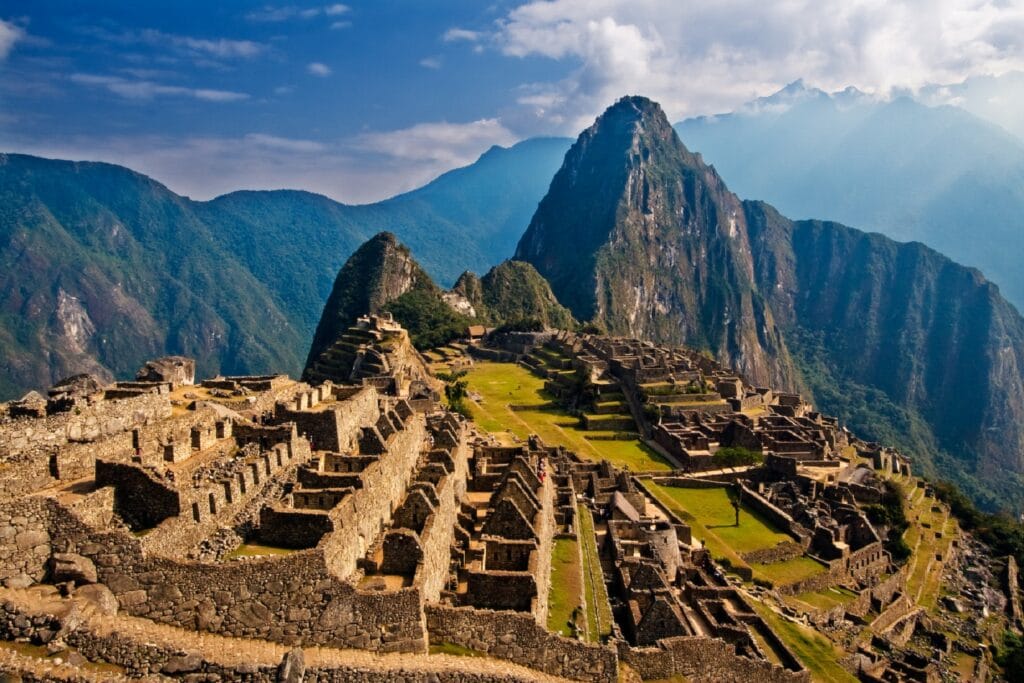
At the moment, the offer of Ecological Tourism in the world is only light Ecological Tourism or greenwashing, that is, an advertisement with attractive images of natural spaces and the ecological tourism label, with the aim of attracting tourists and offering them some activities. that do not usually meet the principles of true ecotourism.
In reality, traditional hotel complexes built near a beach or, close to a pristine natural ecosystem that stands out for its extraordinary beauty, are usually observed. Mass tourism usually produces many negative impacts and those who are favored are the hotel owners and tour operators, without any contribution to the conservation of the environment and the communities and their inhabitants, except for the low-paying jobs that are created to receive to the tourists. Ecological Tourism has received multiple criticisms due to the lack of clear regulations, which is why in the world market it offers an ecotourism that is not true as if it were.
Examples of Ecological Tourism
There are few Ecological Tourism projects that can be pointed out as excellent examples, this in view that although the natural spaces fall entirely within the principles of Ecological Tourism or ecotourism, these projects are negatively impacted by the same success that have within this type of tourism. Due to its scenic beauty and other ecological values, it attracts many visitors, although there are access restrictions. Some examples of Ecological Tourism in natural spaces, which have their rules of use for being areas of protection and special administration.
- Galapagos Islands in Ecuador.
- Fernando de Noronha National Marine Park in Brazil.
- La Selva Biological Station, a private OET Biological Reserve in Costa Rica.
- Chubut in Patagonia in Argentina.
- Pico Duarte and San Juan de la Maguana National Parks in the Dominican Republic.
- Olmos-Lambayeque in Peru.
- Kruger National Park in South Africa.
- Reserve Park: Maasai Mara, Kenya.
- Souss-Massa National Park, Morocco.
- Turuépano National Park, Sucre state in Venezuela.
- Rio Negro, Amazon.
- Tingo Maria National Park, Huánuco in Peru.
- Sierra La Macarena in Colombia.
- Los Nevados National Natural Park, Colombia.
- El Yunque National Forest, Puerto Rico.
- Crax- Rescue Center in Peru.
- Las Estacas-Morelos Natural Park, Mexico.
- Guadalupe Island in Baja California, Mexico.
- Cerro el Chumil- Jantetelco, in Morelos Mexico.
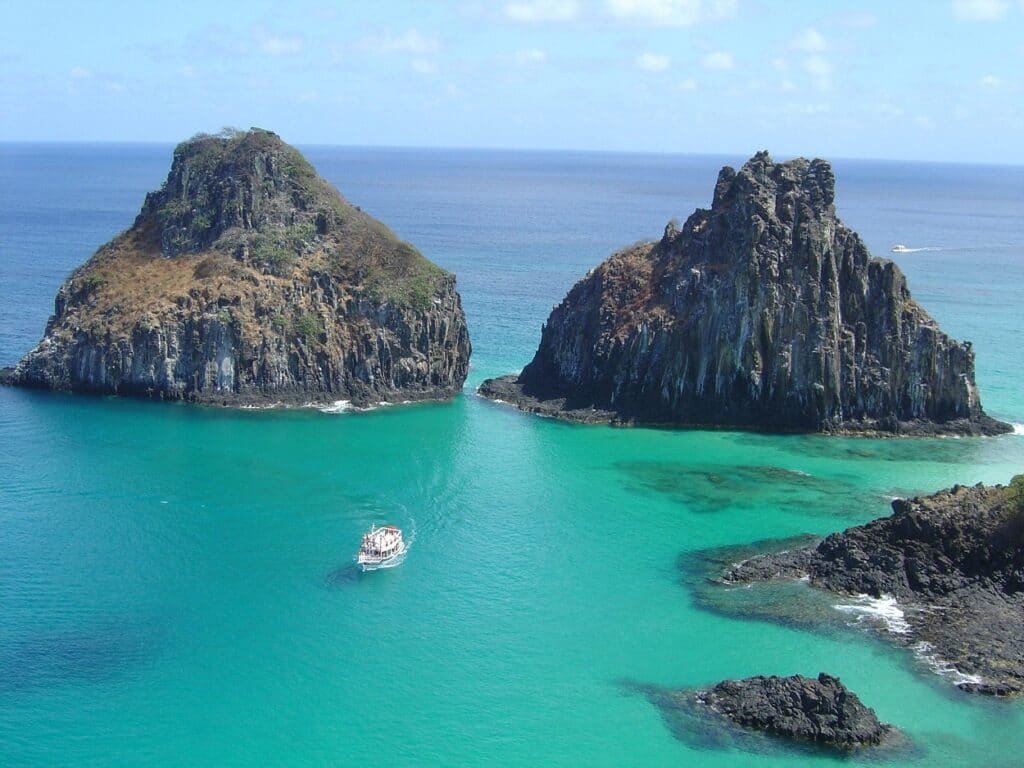
Fernando de Noronha Island
The Brazilian Atlantic islands declared Reserves of Fernando de Noroña and Atoll of the Rocks and a World Heritage Site by UNESCO in 2001. It is located within the limits of the state of Pernambuco in Brazil. It is a volcanic archipelago located in the Atlantic Ocean with an area of 26 km2 and it is made up of 21 islands that are uninhabited and only the largest of the islands is populated, which has a dimension of 17 km2 which is called the same as the archipelago. The other islands are part of the National Marine Park, therefore it is only allowed to visit them to carry out research.
This archipelago, together with Atol das Rocas and Abrolhos, are highly appreciated by divers, which is why many tourists travel to the archipelago just to dive. 15 years ago the facilities for tourism were still very simple and basic, they were family inns and few places to eat; in recent years the facilities have been renovated and new inns have been built with a service aimed at demanding tourists. It should be noted that tourists who visit the archipelago only go to enjoy a place to dive and enjoy the natural beauty, regardless of a little inconvenience.
Turuepano National Park
This is a national park in Venezuela, which is located in the State of Sucre, on the northern edge of San Juan and in front of the Gulf of Paria. This national park stands out for its deltaic plains with marine influence, unique in Venezuela. Its mangroves, pipes and canals stand out and a distinguished member of its fauna is the manatee. Its surface is about 72.600 hectares.
Monteverde Cloud Forest Biological Reserve
The Monteverde Cloud Forest Biological Reserve is a private reserve located in Costa Rica, in the provinces of Puntarenas and Ajajuela, along the Sierra Tilarán. This reserve was founded in 1972, and has an area of 10.500 hectares, receiving an average of 70.000 visitors per year. 90% of the reserve is virgin forest and within the reserve you can see 6 ecological zones.

It is characterized by its high biodiversity in plants and animals, in this reserve more than 2500 species of plants have been described, highlighting the great diversity of species of orchids, 100 species of mammals, 400 species of birds, 120 species of reptiles and amphibians. and thousands of insects.
La Selva Biological Station
This biological station is highly visited by specialists in various areas such as herpetologists, botanists, ichthyologists, entomologists and other specialties. It is located in Puerto Viejo de Sarapiquí, in the northern region of Costa Rica. The Station is part of a larger protected area, the La Selva Protective Zone. This Biological Station is very frequented to carry out research on natural resources of the tropics.
This station is located within a Nature Reserve that has a protected area of about 15Km2 of primary tropical forest. This reserve is surrounded by areas intervened for agriculture and is bordered by the Braulio Carrillo National Park, which is an extension of the Central Volcanic Conservation Area. It is a private reserve and operated by its owner, the Organization for Tropical Studies (OET).
I invite you to continue knowing the wonderful nature and how to take care of it, reading the following posts: